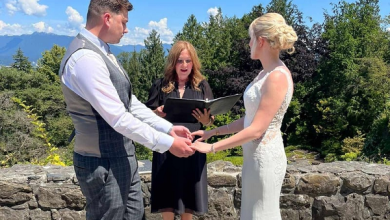Australia Spouse Visa for Immigrants – Visa Sponsorship in Australia
For immigrants aiming to join their loved ones and build a life together in Australia, obtaining a spouse visa is a crucial step. This process, while complex, is manageable with proper guidance and preparation.
The Australia spouse visa, also known as the Partner Visa, allows individuals to live and thrive in Australia alongside their Australian citizen or permanent resident partner. This article serves as a comprehensive guide, offering practical steps and tips to help applicants successfully navigate the requirements and procedures involved in securing this visa.
The Australia Spouse Visa
Step 1: Confirm Your Eligibility
Before starting the application process, it is crucial to confirm your eligibility. To apply, you must be in a genuine and committed relationship with your partner, which can be demonstrated through marriage or a de facto partnership. A de facto relationship generally requires you to have lived together for at least 12 months before applying, although exceptions may apply under specific circumstances.
Additionally, both you and your partner must meet certain criteria:
-
- Both of you must satisfy character and health requirements.
- Your relationship must meet the Department of Home Affairs’ definition of a genuine and ongoing partnership.
Step 2: Gather Essential Documents
The visa application requires comprehensive documentation to substantiate your claims. Commonly required documents include:
- Identity Documents: Passports, birth certificates, and other official identification.
- Relationship Evidence: Marriage certificate, joint lease agreements, shared bank account statements, photos, and written statements from family and friends attesting to your relationship.
- Health and Character Checks: Police clearance certificates and medical examinations.
- Financial Evidence: Proof of financial interdependence, such as joint bills, shared assets, or mutual financial commitments.
Organize these documents meticulously to avoid delays. Label each file clearly, and ensure they meet the Department of Home Affairs’ specifications, such as certified copies and translations for non-English documents.
Step 3: Lodge the Application Online
Applications for the Partner Visa are submitted online through the Australian Immigration and Border Protection website. Follow these steps:
- Create an ImmiAccount: Register for an ImmiAccount to manage your application.
- Fill Out the Application Form: Carefully complete all sections of the form, providing accurate and truthful information.
- Upload Supporting Documents: Attach all necessary documents to your application. Ensure they are properly formatted and legible.
- Pay the Application Fee: The Partner Visa application fee is significant, so plan your finances accordingly. As of 2024, the fee is AUD 8,085 for most applicants.
- Submit the Application: Thoroughly review all the information and documents to ensure accuracy. Once submitted, you will receive a Transaction Reference Number (TRN), which allows you to track your application.
READ – Getting an Australia Study Visa for Immigrants
Step 4: Attend Health and Character Assessments
The Department of Home Affairs requires all visa applicants to undergo health examinations and provide police clearance certificates. Schedule your medical examinations with an authorized panel physician and submit the results as instructed. For police checks, request certificates from every country you have lived in for 12 months or more in the past ten years.
Step 5: Be Responsive During the Processing Period
Visa processing times can vary, typically taking between 12 and 24 months. During this period, the Department may request additional documents or clarifications. Respond promptly to any correspondence to avoid delays. Keep your contact details updated in your ImmiAccount to ensure you do not miss important notifications.
Step 6: Transition to Permanent Residency
After being granted a temporary Partner Visa, you will be eligible to apply for the permanent Partner Visa (subclass 801 or 100) two years from the date of your initial application. During this time, you must continue to demonstrate that your relationship remains genuine and committed. Gather evidence of your ongoing relationship, including photos, joint financial commitments, and communication records.
If your relationship ends due to unforeseen circumstances, such as domestic violence or the death of your partner, you may still be eligible for the permanent visa. Seek professional advice in such cases.
Practical Tips for Success
- Start Early: The Partner Visa process is time-intensive, requiring extensive documentation and preparation. Begin gathering evidence and organizing documents well in advance.
- Be Thorough and Honest: Incomplete or inaccurate applications can lead to delays or even refusals. Ensure every detail you provide is accurate and substantiated.
- Seek Professional Advice: Engaging a registered migration agent can streamline the process, particularly for complex cases. Agents are well-versed in current regulations and can provide tailored advice.
- Maintain a Record of Communication: Keep copies of all communication with the Department of Home Affairs, including emails and uploaded documents.
- Stay Informed: Visa requirements and processing times can change. Keep checking the Department of Home Affairs website regularly for any updates.
- Prepare for Interviews: In some cases, applicants and their sponsors may be required to attend interviews. Be ready to answer questions about your relationship and provide extra evidence if required.
Overcome Common Challenges
- Insufficient Evidence: Many applications are delayed due to inadequate evidence of the relationship. Address this by submitting diverse and robust documentation, such as photographs, joint financial statements, and statutory declarations from friends and family.
- Long Processing Times: While waiting can be frustrating, staying organized and responsive will help ensure your application progresses smoothly. Use the TRN to track your application and follow up if necessary.
- Health and Character Issues: Address potential issues proactively by obtaining police checks and medical clearances early in the process. If you have any concerns, consult a migration agent or legal professional.
- Financial Costs: The application fee and associated expenses can be significant. Budget for these costs in advance and explore financial assistance if needed.
Securing an Australian spouse visa demands careful planning, comprehensive documentation, and patience. By fully understanding the requirements, carefully preparing your application, and seeking professional guidance if necessary, you can approach the process with confidence. In the end, the time and effort dedicated to obtaining your visa will be a meaningful step toward creating a future in Australia with your loved one.



